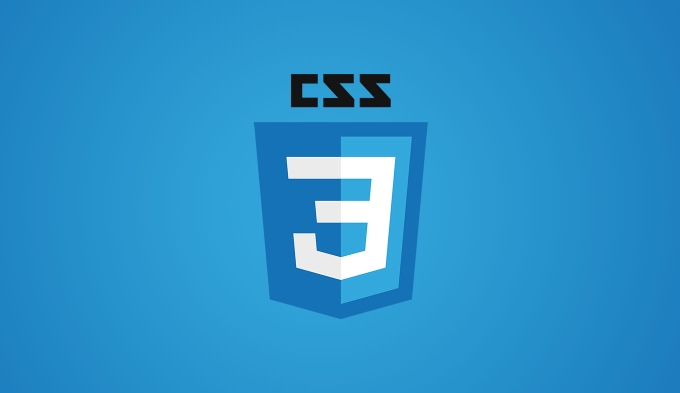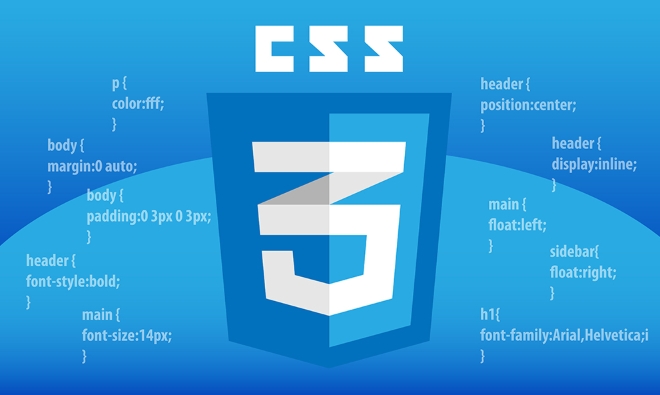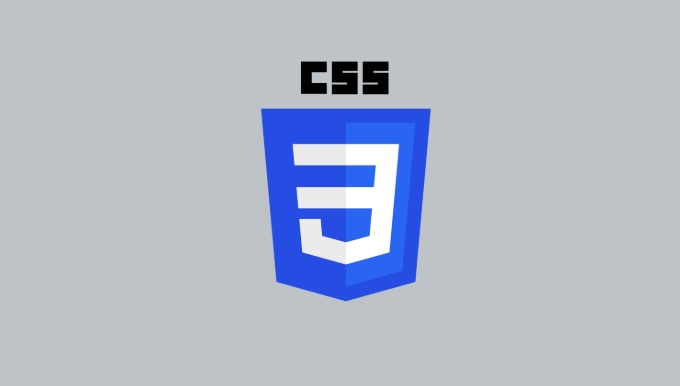Use the clip-path attribute of CSS to crop elements into custom shapes such as triangles, circular notches, polygons, etc. without relying on images or SVGs. Its advantages include: 1. Supports a variety of basic shapes such as circle, ellipse, polygon, etc.; 2. Responsive adjustment and adaptable to mobile terminals; 3. Easy to animation, and can be combined with hover or JavaScript to achieve dynamic effects; 4. It does not affect the layout flow, and only crops the display area. Common usages are such as circular clip-path: circle(50px at center) and triangle clip-path: polygon(50% 0%, 100% 100%, 0% 100%). Notes include: good compatibility but does not support old IE; complex shapes may affect performance; clip-path takes effect after transform and will not change with rotation and scaling. By dynamically modifying the clip-path value, interactive effects such as button expansion and card deformation can also be achieved.

To put it directly, the key point: Using the clip-path attribute of CSS, you can easily crop various custom shapes for elements, such as triangles, polygons, circular notches, etc., without relying on pictures or SVGs.

Why choose clip-path?
In web design, sometimes we need to make the image or background appear non-rectangular shapes. The common method used in the past was to use PNG images or SVG masks, but these methods are not flexible enough and are not easy to maintain. And clip-path provides a pure CSS solution, which:

- Supports multiple basic shapes (circle, ellipse, polygon, etc.)
- Can be responsively adjusted
- Easy to animate (although not all browsers support transitions)
- It does not affect the layout flow, it is just the "cropped" display part
How to write common shapes?
Circles and ellipses
clip-path: circle(50px at center); clip-path: ellipse(50px 30px at 20% 30%);
This type is suitable for making avatars, small icons, and other places where circular cropping is required. The parameters are the radius and the center point position respectively.
polygon polygon()
This is the most flexible and commonly used type, and can create various complex shapes such as triangles, trapezoids, and stars.

clip-path: polygon(50% 0%, 100% 100%, 0% 100%);
The above example will cut a rectangle into a triangle. The coordinates in brackets represent the positions of each vertex, and are connected in order to form a graph.
Tips: If you are not sure how to write coordinates, you can use some online tools to assist in the generation, such as Clippy .
A few notes in practical applications
- Compatibility : Mainstream browsers basically support it, but it is not compatible with the old version of IE. If the project needs to support IE, it is recommended to provide an alternative solution.
- Responsive processing : Using percentage units allows the cropping area to change with the container, suitable for mobile terminals.
- Performance Impact : Complex polygons may affect rendering performance, especially when testing with animations.
- Relationship with transform :
clip-pathtakes effect after element transformation, so if you use rotation, scaling and other effects, the crop area will not change as well.
How to create interesting interaction effects?
You can combine hover or JavaScript to dynamically change clip-path to achieve animation effects such as expansion and deformation.
For example, the effect of gradually displaying all content after hovering a button:
.button {
clip-path: polygon(0 0, 100% 0, 100% 30%, 0 30%);
transition: clip-path 0.3s ease;
}
.button:hover {
clip-path: polygon(0 0, 100% 0, 100% 100%, 0 100%);
}This will enable the visual effect of slowly "expanding" from a small strip, which is suitable for scenes such as cards, navigation menus, etc.
Basically that's it. Master the writing of several common shapes and add a little imagination, and you can use clip-path to create many interesting page effects.
The above is the detailed content of Creating custom shapes with css clip-path. For more information, please follow other related articles on the PHP Chinese website!

Hot AI Tools

Undress AI Tool
Undress images for free

Undresser.AI Undress
AI-powered app for creating realistic nude photos

AI Clothes Remover
Online AI tool for removing clothes from photos.

Clothoff.io
AI clothes remover

Video Face Swap
Swap faces in any video effortlessly with our completely free AI face swap tool!

Hot Article

Hot Tools

Notepad++7.3.1
Easy-to-use and free code editor

SublimeText3 Chinese version
Chinese version, very easy to use

Zend Studio 13.0.1
Powerful PHP integrated development environment

Dreamweaver CS6
Visual web development tools

SublimeText3 Mac version
God-level code editing software (SublimeText3)

Hot Topics
 How can I include CSS only on some pages?
Jun 11, 2025 am 12:01 AM
How can I include CSS only on some pages?
Jun 11, 2025 am 12:01 AM
There are three ways to selectively include CSS on a specific page: 1. Inline CSS, suitable for pages that are not frequently accessed or require unique styles; 2. Load external CSS files using JavaScript conditions, suitable for situations where flexibility is required; 3. Containment on the server side, suitable for scenarios using server-side languages. This approach can optimize website performance and maintainability, but requires balance of modularity and performance.
 Flexbox vs Grid: Understanding the Key Differences in CSS Layout
Jun 10, 2025 am 12:03 AM
Flexbox vs Grid: Understanding the Key Differences in CSS Layout
Jun 10, 2025 am 12:03 AM
Flexboxisidealforone-dimensionallayouts,whileGridsuitstwo-dimensional,complexlayouts.UseFlexboxforaligningitemsinasingleaxisandGridforprecisecontroloverrowsandcolumnsinintricatedesigns.
 Creating an Auto-Closing Notification With an HTML Popover
Jun 10, 2025 am 09:45 AM
Creating an Auto-Closing Notification With an HTML Popover
Jun 10, 2025 am 09:45 AM
The HTML popover attribute transforms elements into top-layer elements that can be opened and closed with a button or JavaScript. Popovers can be dismissed a number of ways, but there is no option to auto-close them. Preethi has a technique you can u
 What is 'render-blocking CSS'?
Jun 24, 2025 am 12:42 AM
What is 'render-blocking CSS'?
Jun 24, 2025 am 12:42 AM
CSS blocks page rendering because browsers view inline and external CSS as key resources by default, especially with imported stylesheets, header large amounts of inline CSS, and unoptimized media query styles. 1. Extract critical CSS and embed it into HTML; 2. Delay loading non-critical CSS through JavaScript; 3. Use media attributes to optimize loading such as print styles; 4. Compress and merge CSS to reduce requests. It is recommended to use tools to extract key CSS, combine rel="preload" asynchronous loading, and use media delayed loading reasonably to avoid excessive splitting and complex script control.
 How to use Lotties in Figma
Jun 14, 2025 am 10:17 AM
How to use Lotties in Figma
Jun 14, 2025 am 10:17 AM
In the following tutorial, I will show you how to create Lottie animations in Figma. We'll use two colorful designs to exmplify how you can animate in Figma, and then I'll show you how to go from Figma to Lottie animations. All you need is a free Fig
 Breaking Boundaries: Building a Tangram Puzzle With (S)CSS
Jun 13, 2025 am 11:33 AM
Breaking Boundaries: Building a Tangram Puzzle With (S)CSS
Jun 13, 2025 am 11:33 AM
We put it to the test and it turns out Sass can replace JavaScript, at least when it comes to low-level logic and puzzle behavior. With nothing but maps, mixins, functions, and a whole lot of math, we managed to bring our Tangram puzzle to life, no J
 External vs. Internal CSS: What's the Best Approach?
Jun 20, 2025 am 12:45 AM
External vs. Internal CSS: What's the Best Approach?
Jun 20, 2025 am 12:45 AM
ThebestapproachforCSSdependsontheproject'sspecificneeds.Forlargerprojects,externalCSSisbetterduetomaintainabilityandreusability;forsmallerprojectsorsingle-pageapplications,internalCSSmightbemoresuitable.It'scrucialtobalanceprojectsize,performanceneed
 Does my CSS must be on lower case?
Jun 19, 2025 am 12:29 AM
Does my CSS must be on lower case?
Jun 19, 2025 am 12:29 AM
No,CSSdoesnothavetobeinlowercase.However,usinglowercaseisrecommendedfor:1)Consistencyandreadability,2)Avoidingerrorsinrelatedtechnologies,3)Potentialperformancebenefits,and4)Improvedcollaborationwithinteams.






